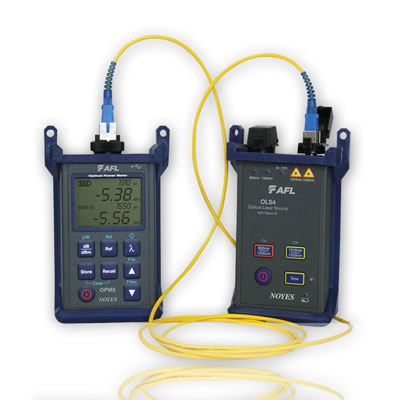Modern Robotic Vision Systems for Optimized Automation and Precision Tasks
Wiki Article
Vital Functions to Seek in Optical Fiber Testing Devices
When reviewing optical fibre testing tools, several crucial features require careful factor to consider to ensure ideal efficiency and dependability. Compatibility with existing industry standards boosts capability, while sophisticated dimension capabilities, consisting of TDR and OTDR testing, deal essential insights into network honesty. Understanding these features will shed light on just how to pick the right devices for your certain needs.Accuracy and Accuracy
Accuracy and precision are crucial parameters in the evaluation of optical fibre screening devices. These two features ensure that measurements show the real performance of fibre optic systems, which is crucial for reliable network installment, maintenance, and troubleshooting. Precision describes the distance of a determined worth to the actual worth, while accuracy denotes the repeatability of measurements under unchanged conditions.When selecting optical fibre screening equipment, it is necessary to consider tools that offer high accuracy and precision to decrease mistakes in information analysis. Tools such as optical time-domain reflectometers (OTDRs) and power meters ought to have calibration mechanisms to guarantee regular performance gradually. Additionally, the specs provided by manufacturers ought to detail the tools's dimension uncertainty, which directly influences the dependability of examination results.
In addition, the performance of optical fibre screening equipment can be influenced by environmental variables, such as temperature and moisture. Therefore, choosing tools designed to reduce these variables will certainly boost measurement fidelity. In verdict, purchasing optical fiber screening equipment with robust accuracy and accuracy features is essential for maintaining ideal network efficiency and making certain the stability of fibre optic communications.

User-Friendly User Interface
The effectiveness of optical fiber screening tools is not solely figured out by its precision and precision; a straightforward interface plays a substantial role in boosting operational performance. A properly designed interface streamlines the communication in between the professional and the equipment, permitting for an extra intuitive understanding of complex functions.Key attributes of an user-friendly interface consist of clear navigation menus, rational formats, and conveniently obtainable controls. These components allow professionals to execute examinations promptly without considerable training, lowering the probability of individual mistake - ofda. Furthermore, visual indications such as progress bars, informs, and graphical depictions of data can significantly enhance the customer experience by giving prompt responses on the screening procedure.
In addition, customizable setups can even more improve operations by enabling users to readjust parameters according to specific screening requirements. This versatility not just saves time yet additionally makes sure that the tools fulfills varied application needs.
Including assistance features, such as tooltips and extensive manuals, into the user interface can even more encourage customers, promoting self-sufficiency and self-confidence in running the tools. Inevitably, an easy to use interface is vital for making best use of the possibility of optical fiber screening devices, leading to more effective and effective testing results.
Mobility and Toughness
Mobility and resilience are crucial qualities of optical fibre testing equipment, making sure that it can withstand the rigors of different environments while remaining very easy to transport. Technicians usually operate in varied settings, from telecoms centers to remote installations, making it crucial that screening tools are light-weight and portable (ofda). Devices made with portability in mind usually includes ergonomic takes care of and instances that facilitate simple and easy movement, therefore improving functional performance on-siteSturdiness is equally necessary, as optical fibre testing devices is commonly exposed to rough problems, including temperature fluctuations, moisture, and physical influences. Devices built with sturdy products such as enhanced plastics or metal housings are better matched for these settings, minimizing the danger of damages during use and transportation. Furthermore, equipment with water and dirt resistance rankings, such as IP ratings, ensures trusted performance in tough conditions.
Compatibility With Requirements
Ensuring compatibility with market standards is vital for optical fiber testing equipment, as it straight impacts the integrity and credibility of examination results. Optical fiber networks are subject to strict efficiency standards established by numerous organizations, consisting of optical fibre testing equipment the Telecommunications Sector Organization (TIA) and the International Electrotechnical Commission (IEC) Testing tools has to comply with these requirements to ensure that measurements correspond and comparable throughout various systems and settings.
When picking optical fiber testing equipment, customers need to confirm that the tool fulfills pertinent standards significant to their details application, such as those pertaining to attenuation, transmission capacity, and crosstalk. Tools that is compliant with well-known standards not only helps in achieving exact results however likewise facilitates interoperability among tools from different suppliers.
Furthermore, compatibility with requirements makes certain that the devices can be made use of in regulative compliance scenarios, which is important for projects in sectors such as telecommunications, aerospace, and military applications. As a result, buying optical fibre screening equipment that lines up with existing industry standards is a fundamental facet of keeping quality control and accomplishing ideal network efficiency.
Advanced Measurement Abilities
Advanced measurement capabilities are a specifying feature of modern optical fiber testing devices, enabling comprehensive evaluation of network performance. These capabilities make sure that technicians can evaluate crucial criteria such as signal loss, dispersion, and transmission capacity, which are crucial for preserving ideal interaction effectiveness.One secret aspect is the capability to carry out time-domain reflectometry (TDR) and optical time-domain reflectometry (OTDR) examinations. These methods allow customers to identify faults, measure the length of fibers, and identify the area of issues with remarkable precision - ofda. Additionally, innovative devices frequently includes the capacity to determine optical power levels, aiding to examine the total health and wellness of the network and make certain compliance with the needed specs.
Furthermore, some screening gadgets supply innovative formulas for real-time analysis, making it possible for quicker diagnosis and troubleshooting. In verdict, investing in optical fiber screening equipment with advanced measurement capacities is essential for making certain network reliability and performance in today's demanding telecommunications landscape.
Conclusion

Report this wiki page